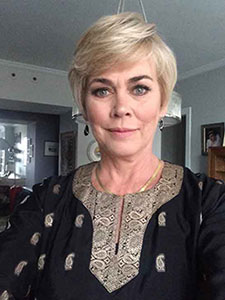Understanding Basic Aluminum Metallurgy is Critical to Understanding the Science and Engineering of Anodizing
 Judy Runge, PhD, AAC Education Committee Chair and experienced Metallurgical Engineer and Surface Scientist, was interviewed for an article with ALCircle. In the article, Dr. Runge talks extensively about the importance of understanding aluminum metallurgy to achieve a good anodic oxide layer.
Judy Runge, PhD, AAC Education Committee Chair and experienced Metallurgical Engineer and Surface Scientist, was interviewed for an article with ALCircle. In the article, Dr. Runge talks extensively about the importance of understanding aluminum metallurgy to achieve a good anodic oxide layer.
“Changes in grain boundary density, and/or the size, shape, population and distribution of particles in the microstructure, change the visual appearance of the finished anode. Recycling processes that don’t take into consideration the formation of new discrete particles by disregarding variations in trace element ratios or the reduced solubility of certain alloy constituents over time can also result in microstructures for the same alloy designation that don’t look the same after anodizing,” she explains.
Dr. Runge goes on to say, “There is a rule of thumb: the more complex the alloy, the more difficult it is to anodize. Aluminum alloys are usually designed with specific mechanical properties in mind, and seldom with how the metal should be finished. I believe that many designers think of the anodic oxide as a deposit similar to an electroplated finish or something to be applied like a lacquer or a paint, which covers the component surface rather than develops it. However, the beauty of the anodic oxide that showcases the metal quality is often a part of engineering designs.”
“I believe that if component industrial designers would incorporate metal finishing as an important detail in their initial designs, as a mechanical property, and involve their metal finishers in the design discussion, these challenges could be minimized, and even overcome,” she continues.
Read the full interview HERE.


